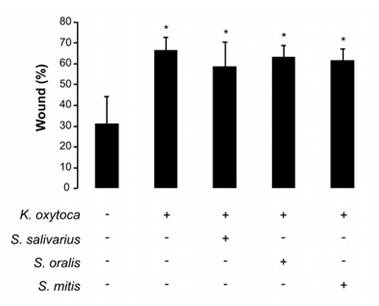A recent paper from Tine De Ryck’s lab at Ghent University shows the use of the TR146 cell line in a unique in vitro oral mucosa co-culture model. This novel model enabled the co-culture of microbiota and TR146 epithelial cells in non-infectious conditions and showed that indirect host-microbe interactions are able to modulate the epithelial wound healing process.
TR146 was established by H. Thomas Rupniak and Bridget Hill at the Laboratory of Cellular Chemotherapy managed by the Imperial Cancer Research Fund. Previously, excised porcine buccal mucosa was considered a reasonably good model of human buccal mucosa for drug delivery studies due to its morphological similarities and comparable permeability. However for increased rapidity and efficiency of drug permeability screening this cell line holds many advantages over excised tissue.
Such advantages include, the cells form an undifferentiated, non-keratinised stratified epithelium. TR146 has been characterised for permeability and hydrophilicity over a range of pH and osmolality. Furthermore, activity levels of aminopeptidase, carboxypeptidase and esterase have also been studied and have been shown to be comparable to that of human buccal epithelium. Therefore TR146 represents a unique in vitro model of buccal mucosa.

Wound healing capacity of TR146 epithelial cells confronted with K. oxytoca alone or mixed with S. salivarius, S. oralis or S. mitis. Image published in De Ryck et al. 2015. AMB Express. 5:27.
View the datasheet for more information and publications.
HAVE YOU REGISTERED?
Join the ever-growing global Ximbio community. Register and receive updates about new reagents, institutes and new features being added to the website.
